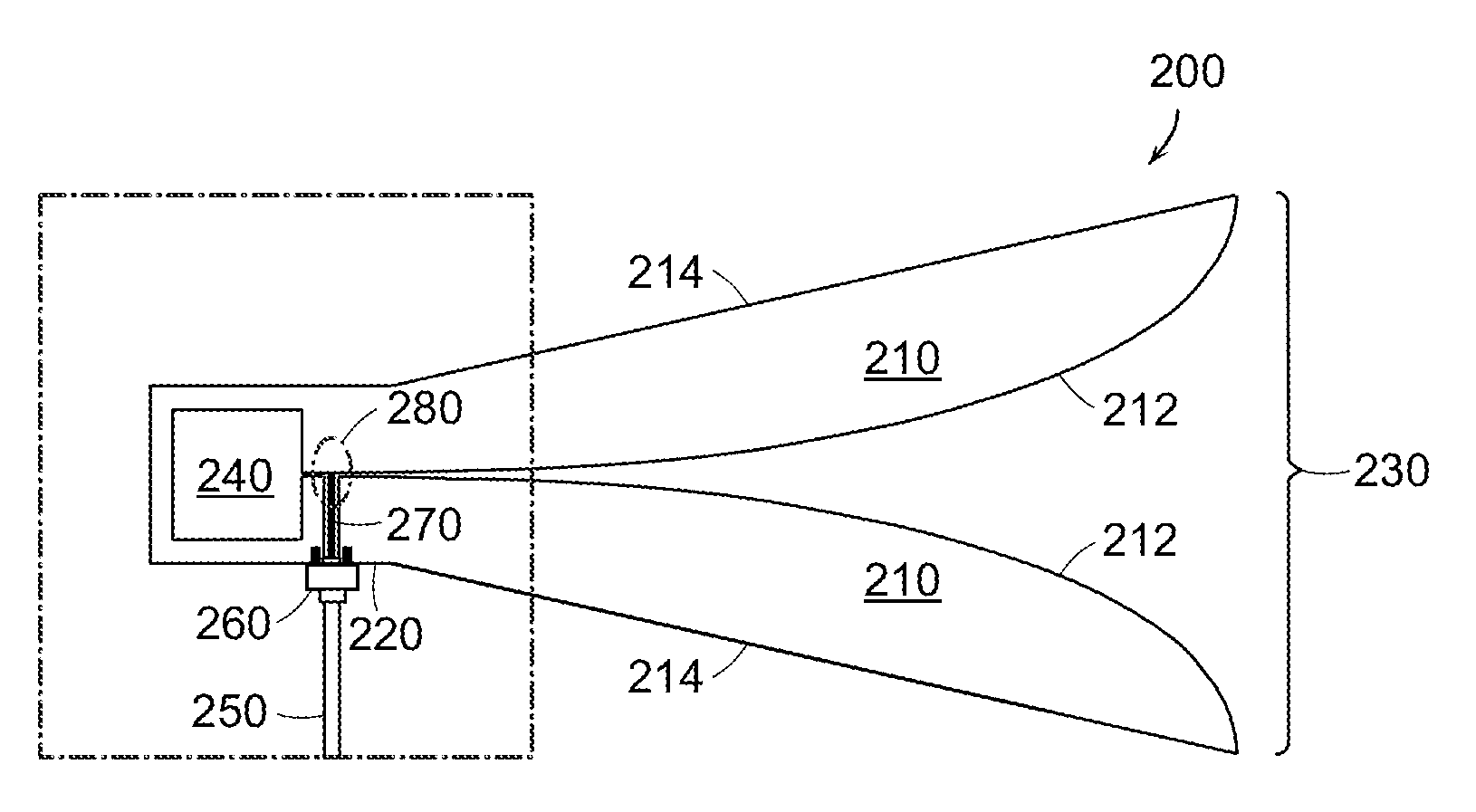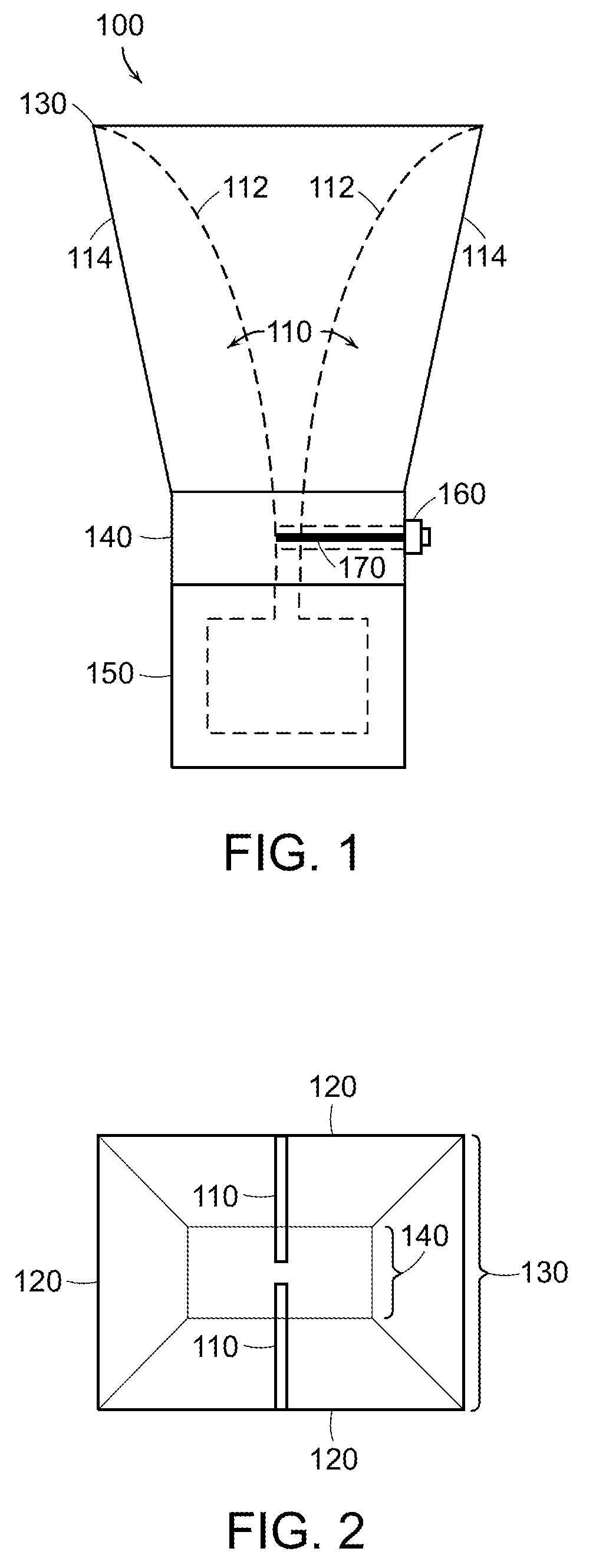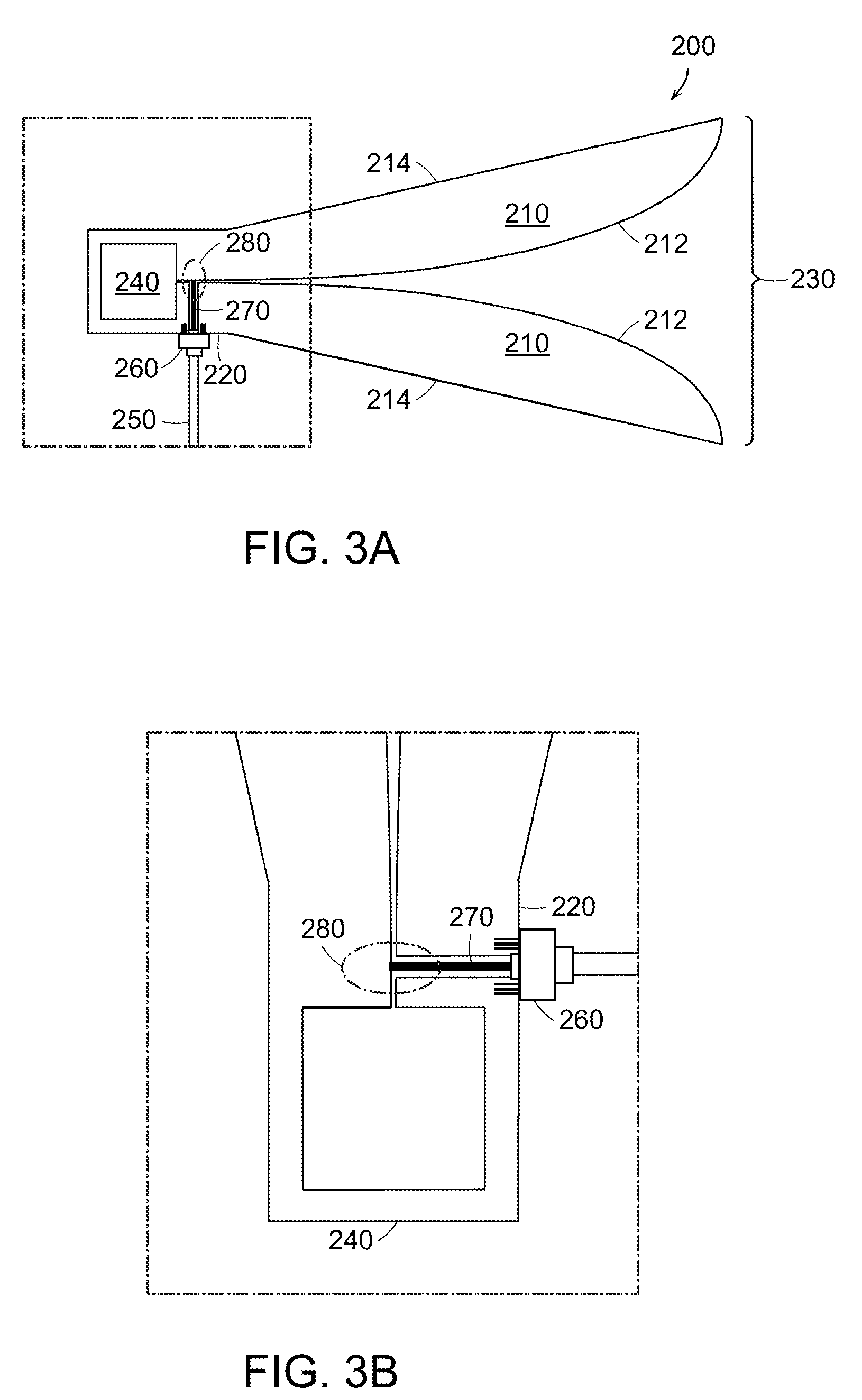Horn Antenna with Integrated Impedance Matching Network for Improved Operating Frequency Range
a horn antenna and impedance matching technology, applied in the field of horn antennas with integrated impedance matching networks, can solve the problems of reducing the service life of the horn antenna, so as to reduce the mismatch effect of impedan
- Summary
- Abstract
- Description
- Claims
- Application Information
AI Technical Summary
Benefits of technology
Problems solved by technology
Method used
Image
Examples
Embodiment Construction
[0044]Turning to the drawings, exemplary embodiments of a dual-ridge horn antenna are shown in FIGS. 3 and 5. As will be described in more detail below, the antenna design provided herein improves upon conventional designs by embedding an impedance matching network within at least one “ridge” of a dual- or quad-ridged horn antenna. The impedance matching network improves the operating frequency range at the low end by reducing impedance mismatch between the coaxial transmission line and the ridge(s) at the feed point. In a general embodiment, the impedance matching network may include a conductive feed line or conductive pin, which extends from the coaxial transmission line, through a first one of the ridges and into a notch formed within a second one of the ridges. The length and diameter of the conductive pin may be chosen, so that the conductive pin does not make physical contact with the ridges, but instead, couples indirectly through capacitive coupling. In some embodiments, a ...
PUM
 Login to View More
Login to View More Abstract
Description
Claims
Application Information
 Login to View More
Login to View More - R&D
- Intellectual Property
- Life Sciences
- Materials
- Tech Scout
- Unparalleled Data Quality
- Higher Quality Content
- 60% Fewer Hallucinations
Browse by: Latest US Patents, China's latest patents, Technical Efficacy Thesaurus, Application Domain, Technology Topic, Popular Technical Reports.
© 2025 PatSnap. All rights reserved.Legal|Privacy policy|Modern Slavery Act Transparency Statement|Sitemap|About US| Contact US: help@patsnap.com



